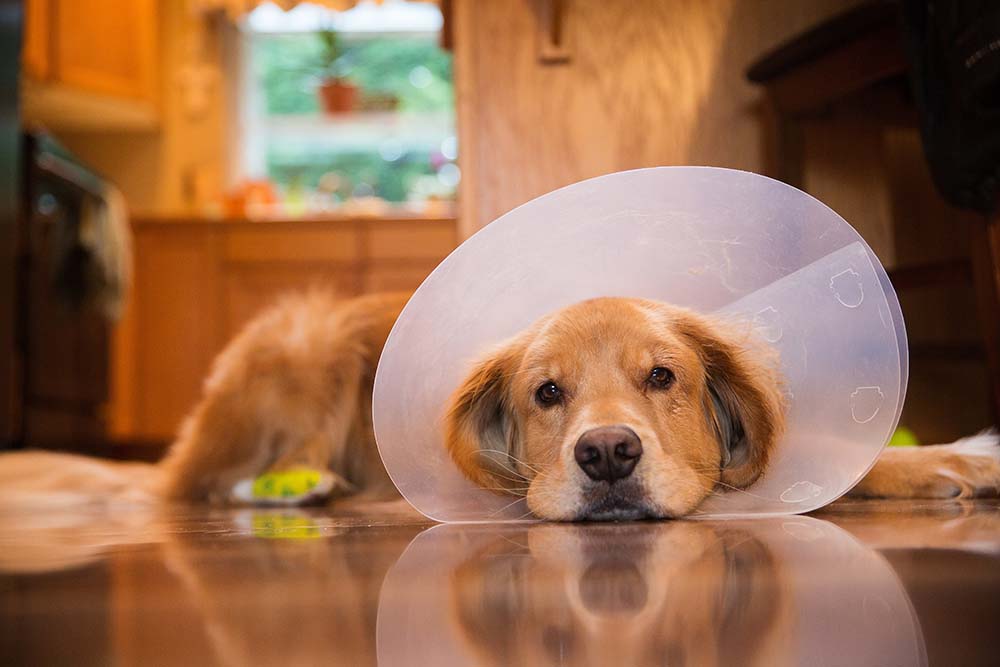
Modified Maquet Procedure (MMP)
MMP Surgery
Dogs love to run, jump and play. An orthopedic injury can put that playful spirit on hold. Similar to the ACL in humans, the cranial cruciate ligament (CCL) is a tough band of tissue deep within the knee joint. If the CCL ruptures or tears, the injury may cause your dog to limp or experience lameness.
At Fowlerville Veterinary Clinic, we offer cruciate repair with the Modified Maquet Procedure (MMP) and the Modified Retinacular Imbrication Technique (MRIT), also known as Extracapsular Suture. If you live in or near Fowlerville, Michigan, we invite you to learn more about how these procedures could help your beloved pet and which one is best for them.
What Is the Modified Maquet Procedure (MMP)
MMP is a surgical repair of a ruptured cranial cruciate ligament, or CCL tear. These types of injuries cause the patient’s tibia to thrust forward when moving or even just bearing their own weight. MMP surgery is a minimally invasive procedure that can repair a torn or ruptured CCL in your dog’s knee joint. The surgery works by redirecting the impact of the large quadriceps muscle to compensate for the injured cruciate ligament. The patellar tendon can then take over and act like a new CCL tendon.
Which Pets Can Receive MMP Surgery?
Failure of the cranial cruciate ligament is common in dogs. The Modified Maquet Procedure can treat CCL injuries while also addressing pain and immobility. CCL tears can be caused by a sudden injury. More often, they happen gradually over time, worsening with continued use. Some signs that your dog may have an injured CCL include:
- Limping
- Lameness in hind legs
- Favoring the opposite leg
- Changes to their gait or the way they walk
MMP vs TPLO
There are a few cruciate ligament repair options for dogs, including TPLO (Tibial Plateau Leveling Osteotomy), TTA (Tibial Tuberosity advancement) and MRIT (Modified Retinacular Imbrication Technique).
TPLO surgery involves cutting into the tibia bone, rotating it and adjusting its position. Bone plates and screws are then used to hold the bone graft into place.
Although every patient is unique, there are a few reasons our veterinarians may recommend MMP over TPLO:
- MMP is minimally invasive
- MMP only cuts the bone once instead of three times
- MMP is usually more affordable, as it’s less time-intensive
What Does MMP Cruciate Ligament Surgery in Dogs Look Like?
The overall goal of MMP is to free the part of the tibia attached to the quadriceps muscle and redirect the force generated by these large muscles to compensate for the injured CCL. The tibia is the bone located between the knee and ankle (shin bone). During MMP surgery, a single cut is made in the top of the tibia just behind the tibial tuberosity. The void created is stabilized using a wedge implant made from porous titanium OrthoFoam. This change allows the quadriceps muscle and patellar tendon to take over and act in a similar way to the CCL.
The orthopedic implant being porous promotes healing and accelerates bone growth. Capillaries can penetrate the OrthoFoam, reducing patient convalescence and the pain your dog experiences post surgery. After four to six weeks, the implant fills with enough bone to stabilize the repair.
What to Expect After Treatment
To ensure your dog’s optimal healing after treatment, our veterinarians will recommend a period of controlled activity. Although MMP tends to cause less discomfort than other procedures, the patient should not use the operated leg too much, too soon.
Running, jumping and rough play should be avoided for at least six-eight weeks post surgery. You’ll also want to block off access to stairs. We recommend using a leash whenever your dog is outside for at least 6-8 weeks. Following these recommendations will give the bone time to heal and reduce the risk of strain, stress fracture or implant failure.
After eight weeks, X-rays should confirm that everything is healing as it should. By this time, your dog should be able to take walks for up to 30 minutes in grassy areas. After 12 weeks, your pup should be able to resume a normal level of activity.
Why Choose the Fowlerville Veterinary Clinic Team?
At Fowlerville Veterinary Clinic, we continually strive to exceed the expectations of animal owners by treating their pets as if they were our own. Our veterinarians provide a wide variety of surgical procedures, including MMP surgical repair of CCL tears. We work to understand our patients, including what makes them special and unique. If you find that your dog is struggling to walk, our veterinarians will take the time to understand your concerns and determine the best treatment options for your beloved pet.
Schedule Your Cruciate Surgery Consult in Fowlerville, Michigan
If you believe that your dog has suffered a CCL tear or is struggling with chronic pain, please reach out to the team at Fowlerville Veterinary Clinic. We would be happy to answer your questions or concerns and provide you with more information about MMP surgery and our other treatment options. We serve families throughout the Fowlerville area and beyond. We also take referrals from other vet practices unable to offer orthopedic surgery. Contact us today to learn more or make an appointment online.

